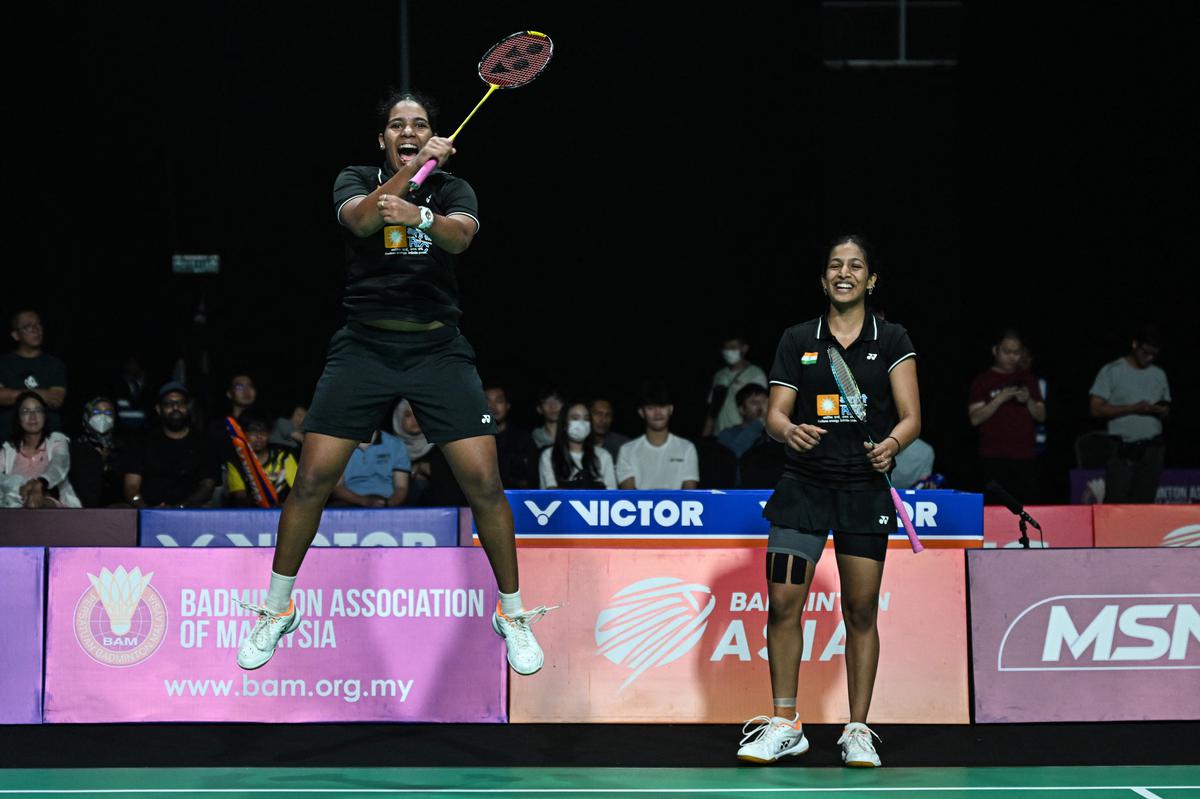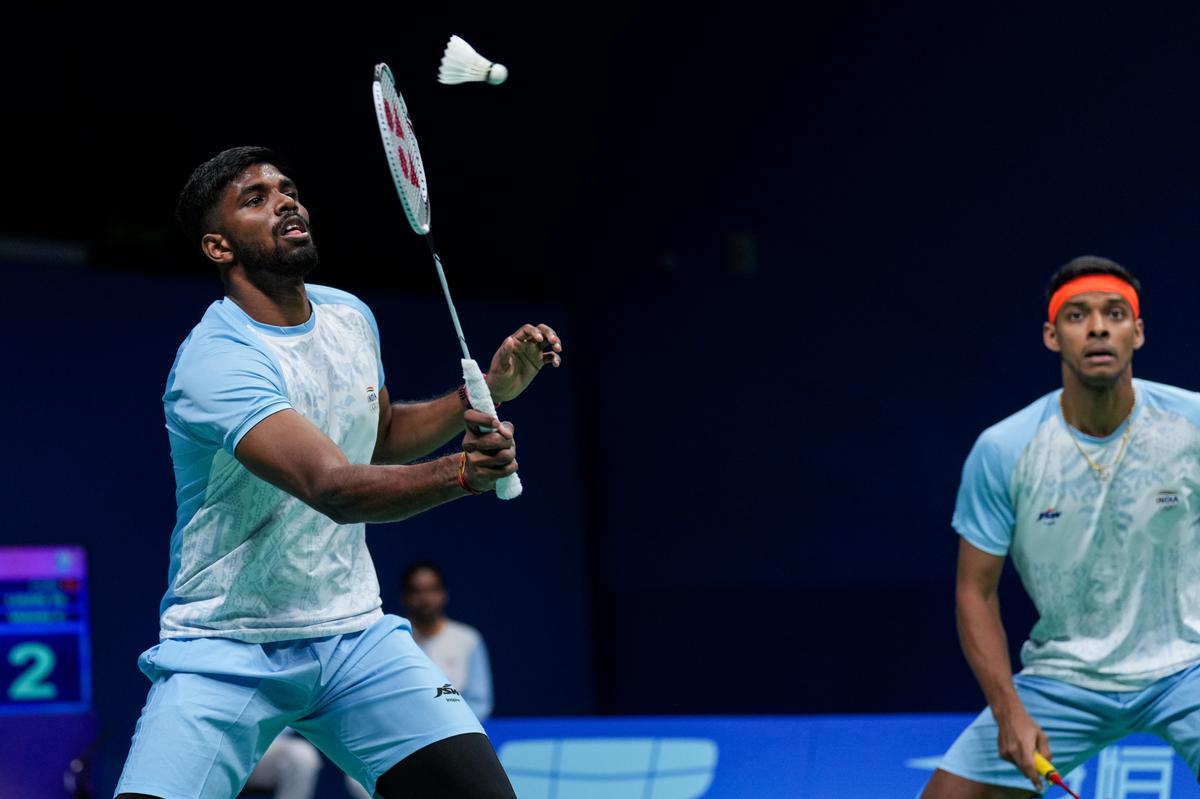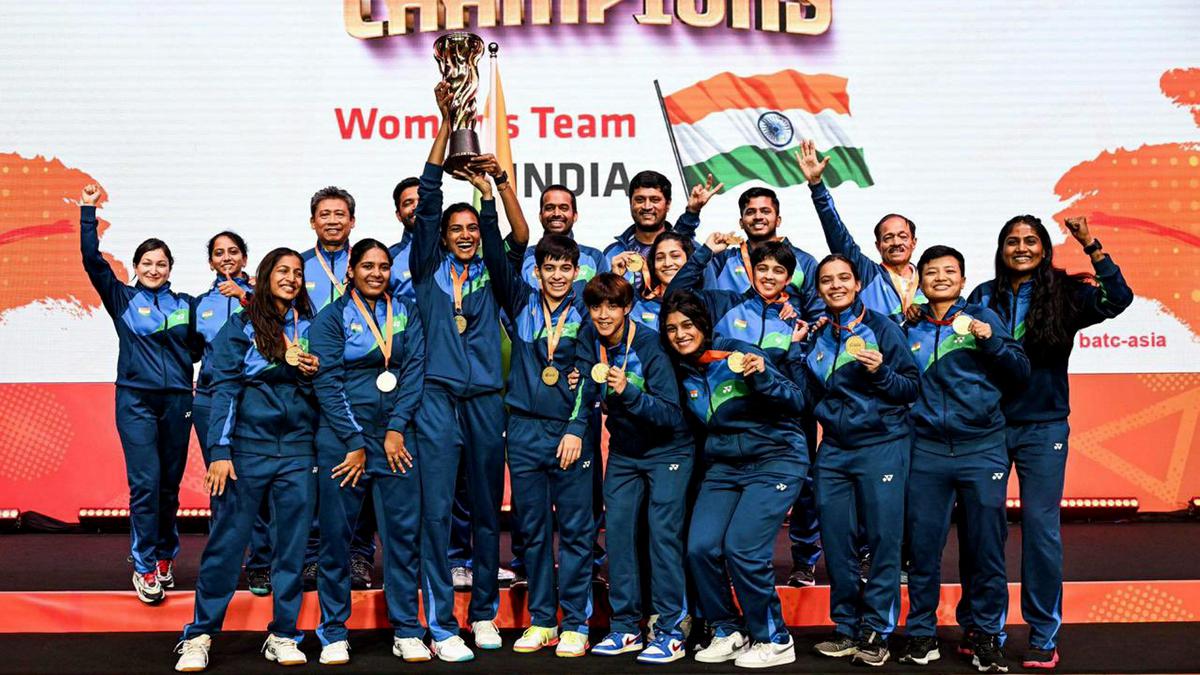I am expecting two badminton medals in Paris, says Olympian Aparna Popat
The Indian women’s team, led by double Olympic medallist P.V. Sindhu, recently clinched the Badminton Asia Team Championships (BATC) title with a thrilling 3-2 victory over Thailand in the final in Shah Alam, Malaysia.
The victory gives India a confident start to the season, which becomes important given the event roster 2024 has for badminton. This is India’s first BATC title, a feat that saw the outfit beat badminton superpowers China, Hong Kong, Japan and Thailand enroute to the top of the podium.
Let’s put this campaign in perspective. When we entered this tournament, I don’t think there were expectations in terms of how the team would perform, but there were people looking out for individual performances like Sindhu coming back after a while post injury. There was focus on the doubles scene because of Paris qualification considerations and so those two pairs were closely watched. And then we had a couple of gifted youngsters as well in the team to keep an eye on.
There is another asterix too. The top teams did not field a lot of their top players for their own reasons but my rebuttal to that is that a side can only face the opponent in front. If your top players don’t show up for whatever reason, too bad. That worked in India’s favour and we took advantage of it.
ALSO READ | Treesa Jolly and Gayatri Gopi Chand – Double(s) delight for Indian badminton
Now coming to the players. Sindhu had a good run. Coming off an injury layoff, Sindhu could ease into the tournament. Without the stiffest competition, she was able to get some wins easily to prepare her in the run up to important tournaments like the All-England Open coming up soon. Gayatri Gopichand and Treesa Jolly were also coming back after injury hiccups. To be able to come and win against top players injects confidence. Ashwini Ponnappa and Tanisha Crasto were also in the mix. Ashmita Chaliha and Anmol Kharb, who played lower down the order, got a chance to play experienced and higher ranked opponents, like former World No.1 Nozomi Okuhara, from Japan.
It was a well-placed tournament in the calendar. The layout was great for us. Now, will this team go on to become world beaters at, say, the Uber Cup? We do have a great chance and I say that because if Sindhu strikes form, that presents a big opportunity for India. We also have two doubles pairs. Earlier, the order of play would be different with singles being our area of confidence. Now, we have two strong doubles options who can double up on the individual brackets. We have a chance at the Uber Cup, but it certainly will be much more difficult.

Top of the world: Treesa Jolly (L) and Gayatri Gopichand celebrate after winning against Thailand’s Rawinda Prajongjai and Jongkolphan Kititharakul in their doubles finals match at the Badminton Asia Team Championships (BATC).
| Photo Credit:
AFP
Top of the world: Treesa Jolly (L) and Gayatri Gopichand celebrate after winning against Thailand’s Rawinda Prajongjai and Jongkolphan Kititharakul in their doubles finals match at the Badminton Asia Team Championships (BATC).
| Photo Credit:
AFP
The 2024 checklist
A long year lies ahead and keeping the increasing order of significance of the events lined up, a few elements need to be focused on. Everyone contributing and hitting form when it matters is one such aspect. The Uber Cup is a longer tournament with multiple ties. Each player plays an important role. The two benefits that players will take from this tournament is the confidence that comes from beating higher-ranked players and knowing that you can perform under pressure and do well. Seeing firsthand that it’s possible to not crumble when things get hard means you go in without fear should such a situation happen again.
It might look like team events is where India thrives — look at the Thomas Cup triumph in 2022, the Mens Team silver medal at the recent Asian Games and now this win at the Asian Team Championships. It’s too soon to manifest a pattern here but the one positive certainly is that we have top class players across different events now, which was not the case some time ago. India has three Uber Cup medals, two of those from the recent past and that was largely because of Saina Nehwal, Sindhu, Jwala Gutta and Ashwini.
Therefore, having a smooth singles and doubles combination becomes very important. Look at the men’s side of things. We have three top class singles players, but even if we had two, we still have Satwiksairaj Rankireddy and Chirag Shetty. Doubles becomes important because it will come up somewhere in the first three matches of a team event. I won’t call it a safety net, but a good doubles pair balances the team and is a big advantage. Doubles is something India seems to have finally got right. It was the missing piece.
A diverse talent pool
Let’s look at the personalities involved here, starting with Ashwini. To come in and be part of a team as a senior and playing with a younger partner comes with a bit of pressure. You know that there is a lot at stake and so, on one side, it demands it a little more on court but there’s also the weight of Olympic qualification, so you’re guarding against injury. Yet the unfortunate injury to Tanisha Crasto, forced Ashwini to pair up with Sindhu. They had to adapt and to just show that she is willing to do whatever it takes for the team was quite incredible.
The progress Treesa and Gayatri are showing as a pair is another shot in the arm for India. The best indicator isn’t just that they’re winning regularly, but it’s about the kind of matches and the quality of opponents they’re able to beat now. The draw is never in our hands, so the more you beat top-ranked players, the healthier your growth chart gets. What’s interesting is, at one point, they were the favourites to for the Paris Olympics, but right now, there’s competition between them and Ashwini/Tanisha to make the cut. It’s one thing to compete against an opponent, but to take on this qualification pressure is another story altogether. Then again, they train at P. Gopi Chand’s academy, where these situations are not new. That makes a huge difference.
This also underlines why 17-year old debutante Anmol’s story is such an incredible one because she has not yet had exposure to a setup like this. You can have personal expectations and ambitions, but she’s not in an environment where Olympic medallists, world champions and world top ten players are training and walking in and out of the room.
Duo on the rise: Ashwini Ponnappa (R) and Tanisha Crasto have developed a formidable partnership, as seen at the Yonex-Sunrise Guwahati Masters last year.
| Photo Credit:
RITU RAJ KONWAR
Duo on the rise: Ashwini Ponnappa (R) and Tanisha Crasto have developed a formidable partnership, as seen at the Yonex-Sunrise Guwahati Masters last year.
| Photo Credit:
RITU RAJ KONWAR
So much has been said about her and her remarkable victories. For me, her temperament stands out, which also includes her presence of mind. It’s not only about being calm, but it’s also about making the right decisions and having the right clarity under that kind of pressure. I liken this to the Neeraj Chopra brand of simplicity and calm. Her attitude was a mix of ambition and humility – it’s like she’s saying, ‘I’m here, I’m self-assured. I know I don’t know it all but I am confident of what I do know and with that I will do my utmost best for the team’. Such brilliance in one match is fine, but to do it thrice against higher-ranked opponents in the deciding match of the tie at such a young age is remarkable.
When the giants return
The big names will return. Every match, against any opponent, is a learning opportunity. Each match is like a ladder you climb to get closer to the top. Now whether you play them in a World Tour event, a Team Championship or anywhere else, the brief is the same. You must scale those rounds and gain that experience, to get ahead.
Sindhu is the top ranked Indian player in singles and she’s almost always going to go up against the best players on the other side of the court. Her personal discomforts against certain players do not matter and Sindhu has seen it long enough to not be bothered either. For someone like Ashmita, this will get a bit harder. If you look at Okuhara, she too hasn’t been in great form lately. She has had her fair share of challenges and injuries, but it doesn’t matter. She might be a former World Champion, but you have to beat her and get ahead and build from there. A good example to see here is H.S Prannoy. He had defeated many top players. Just that he wasn’t able to get those wins consistently enough and in back-to-back matches to put him in a position for a podium finish at the bigger events. Now he’s found that consistency and the results are telling. It’s a journey and going through the motions of these matches is the only way forward.
Future of Indian women’s badminton
Whenever we see young talent coming through the ranks in badminton, everyone is tempted to ask questions like — who the next Sindhu is, who the next Saina is, who will headline the future for Indian badminton?
When the results came, I thought it was a fitting reply and I hope this question doesn’t come up at least for a few days. We’ve been saying there are many talented players out there, but they were just visible in flashes. I don’t know if it’s a good problem that we have maybe five or seven girls who are talented, but then we weren’t able to identify those one or two who were really outshining the others over a period of time.
That is what I want to see now. I want to see players maintain their form; and this doesn’t involve only performance because that is sometimes dictated by the draw. These players should maintain a certain standard of play without being erratic. The second thing we need to track is the improvement curve. An upward trajectory is important but also as we have seen with Saina and Sindhu, the speed of improvement is of essence. Ideally, we need good players with a steeper upward curve.

Peaking at the right time: Satwik-Chirag is one of the most feared doubles pairings in the world right now. A lot will be expected of them at the Paris Olympics.
| Photo Credit:
Getty Images
Peaking at the right time: Satwik-Chirag is one of the most feared doubles pairings in the world right now. A lot will be expected of them at the Paris Olympics.
| Photo Credit:
Getty Images
Gopi Chand, in an interview recently, said that Anmol and Ashmita might now be marked. My interpretation of this is that there is scope to learn and fix. I don’t say fix because something is broken, but because that kind of learning has to happen constantly to perform at a high level.
ALSO READ | I think my life will change after this win, says Anmol Kharb
Looking ahead to the Paris Games
I am expecting two medals, and maybe even three for India at the Paris Games. Three will be outstanding.
This last leg ahead of Paris will be spent focusing on securing qualification for a few and peaking at the right time for others. Workload management will be an important consideration here.
Prannoy and Satwik/Chirag might have a choice to skip a tournament or two if they want, but the same may not be true for Sindhu or our womens doubles pairs who want those ranking points and competition exposure.
One important thing that we as the ecosystem should remember is to not read too much into the performances over the next few months.
From now until the Olympics, players will strategically prepare to ready themselves for the Games. It’s the process not the result, so hopefully critics, fans and the media are kind to the players through it all.
The author is a two-time Olympian, Commonwealth Games silver medallist, and nine-time Senior National badminton champion.



